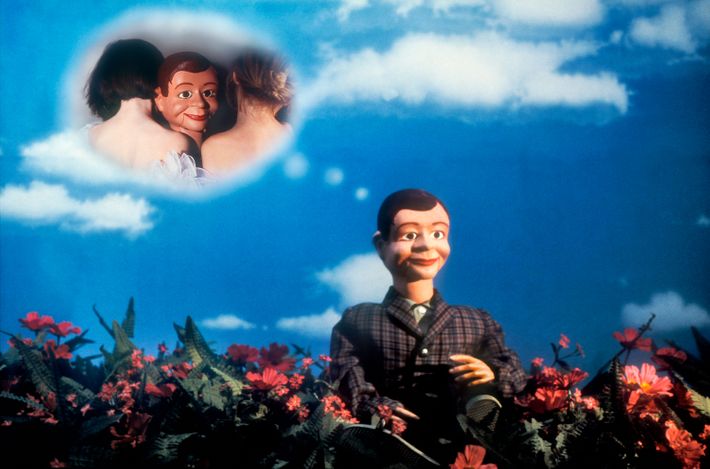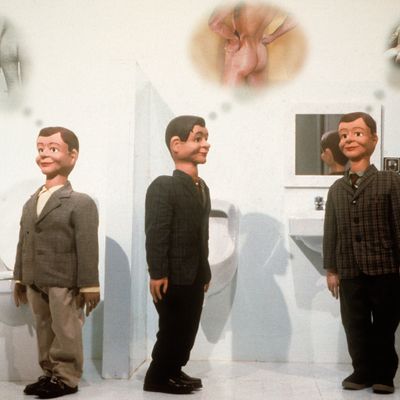
This week, the artist Laurie Simmons finds herself in the unusual position of having two prominent galleries showing her work at the same time. At the Mary Boone Gallery in Chelsea is “Cafe of the Inner Mind,” a body of work she created in the 1990s that is centered around images of a group of six ventriloquist’s dummies. Across town, at Salon 94’s Bowery outpost, is “The Mess 2017,” a collection of portraits of live people (including Simmons’s daughters, Lena and Grace Dunham), accompanied by a rainbow-colored collection of plastic stuff. But according to Simmons, this is hardly the whole story of this moment. To consider her psyche fully, one must include the show of new work by Carroll Dunham, Simmons’s husband, that’s also up at the Gladstone Gallery.
New York: How did the double show come about?
Laurie Simmons: Well, in the case of the Mary Boone show, it was really because Mary, who really came to prominence showing a wave of male painters in the ’80s, has sort of reimagined herself. Now she is very committed to showing women. She approached me a couple of years ago and said she’d been thinking about my work for a really long time and she wanted to do something. I resisted. I don’t do gallery shows that frequently, and I was already working on this body for work for my [other] show at Salon 94, but she’s got such an interesting program and there’s so much love coming from her, so I just finally said okay, I’m going to do it. The most interesting thing to me was that she and Piper Marshall, the curator, picked this group of work made in the early ’90s called “Cafe of the Inner Mind.” The pictures were shown once, they got a terrible review in the New York Times, and then I put them away.
Tell me about the work.
For some years, I’d worked with a ventriloquist to design these dummies — there are six of them — and then I dressed them in little boys’ clothes from the ’40s, ’50s, and ’60s — basically, right up to the time when boys started dressing like boys, when they were still dressed like mini-men. There was something so sinister about that.
The pictures are all about what’s going on in the dummies’ heads.
It was right around the time I was becoming aware of Photoshop, so I realized that I could put them in different situations and I could give them cartoon thought bubbles. I’ve always loved comic books, and I decided I could give men their inner thoughts. I had grown up in a world dominated by women — I had aunts and sisters and great-aunts — and I just felt like I lived in a completely female world. With the exception of my father, men were so mysterious to me, so this became an exercise: What do men think about?
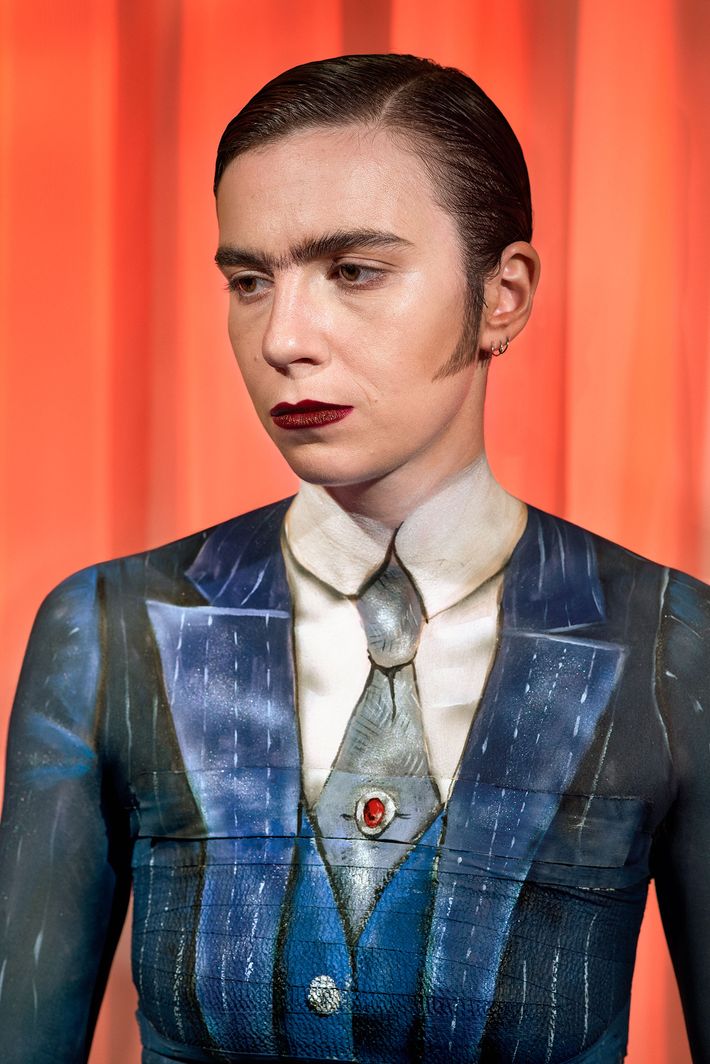
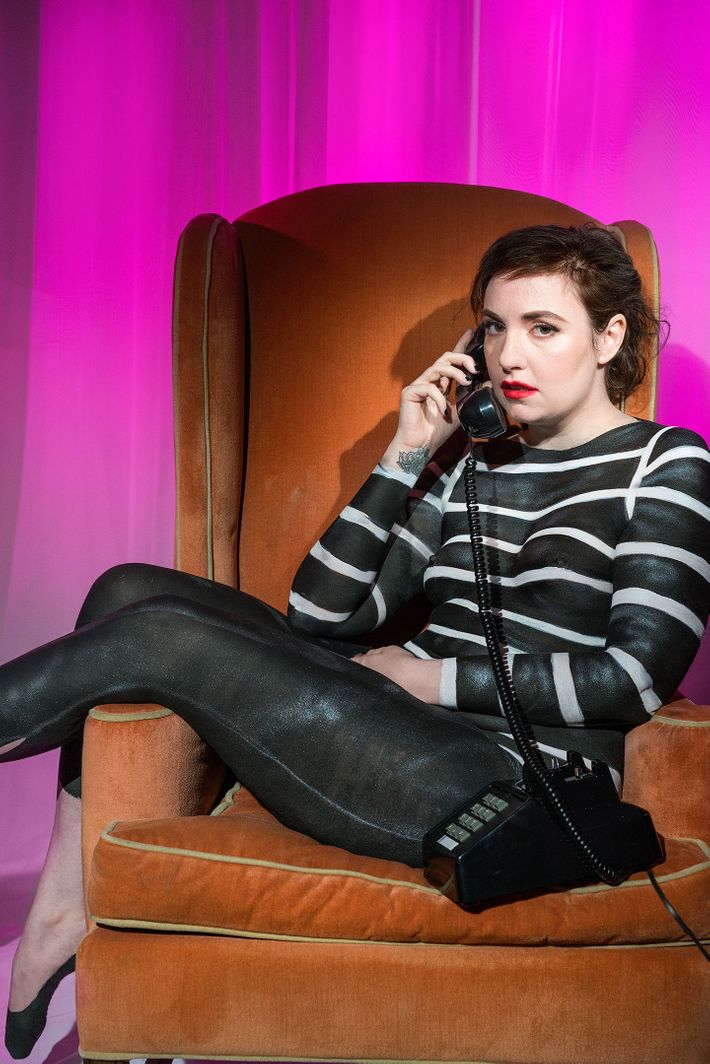
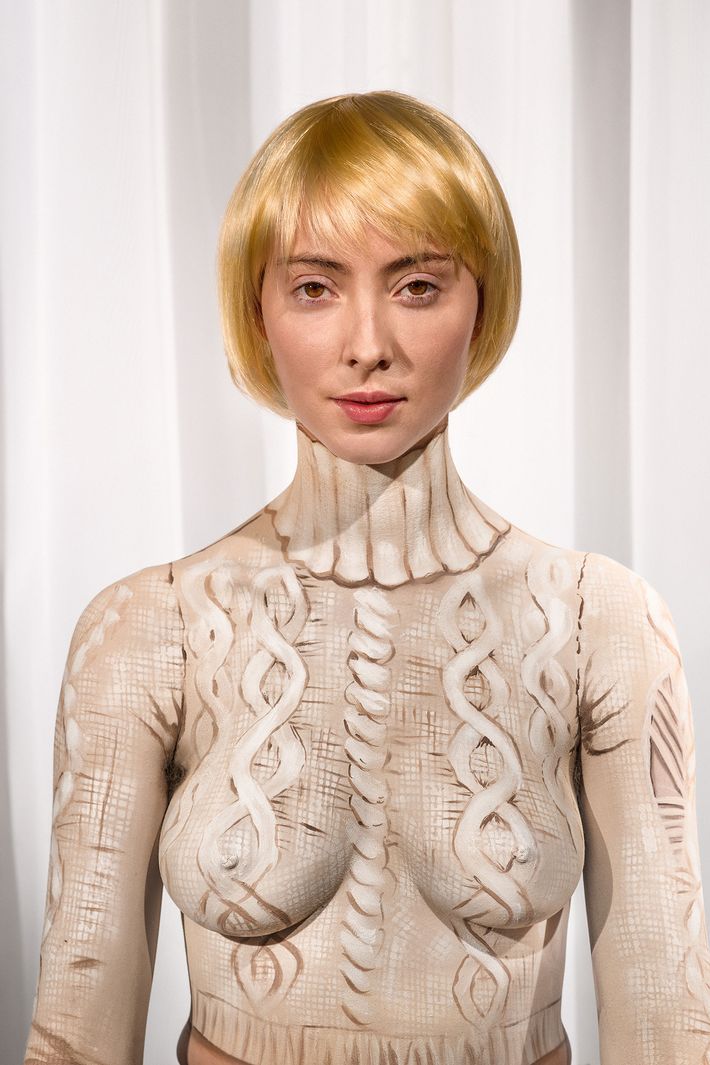
And Grace and Lena had been born by then, yes?
I made [these artworks] in 1994, so I had two young daughters at that point, and I thought about the kind of world that they were going into, what they had to face. I guess you could call it a very early, private #MeToo moment. I didn’t intend to offend anyone, but I think when they came out they might have been offensive to men — like, you think this is what we think about? And the answer is: Yes! I was pretty surprised that Mary and Piper picked this work — which, by the way, happens to be my husband’s favorite.
Was it based on any specific experience?
I had this superficially picture-perfect childhood, and I remember being 7 or 8 and out for a walk with my father and our collie, Cindy, and my father explaining that if a guy ever messed with me I should take my knee and kick him in the groin. I remember thinking, Oh my god, I can’t wait! I felt so empowered. I thought my father was biggest, tallest, smartest, handsomest man in the world, so if he was telling me something I was taking it really seriously.
Why do you think it got that bad review the first time around?
Probably because of the implication that men are dummies. I had gone to visit a class at SVA and done a slide lecture, and the critic for the Times brought his class in so he had a real jump start, which meant that the day the show opened it already had a bad review. I think his complaint was more like, Is she saying all men are dummies? It was a really different time for men, and men reviewed it. I do think that people are more sophisticated now and can understand that this is a projection and a cartoon and an oversimplification — the pictures look more like comic books than like a psychoanalytic study. I also had a male assistant at the time, which was very unusual for me, and his influence was very powerful — he was bringing me all these porn magazines, like over-40 porn, foot-fetish porn, lesbian porn. Also, Marilyn Minter was giving me porn magazines. I didn’t understand until then that there was all of this fetish stuff available. It’s pre-digital age [but] I was able to construct the images with Photoshop, with a lot of cutting and pasting. There was so much different stuff. It was an education. So on the one hand, I had these little girls and on the other hand, I was exploring new kinds of porn.
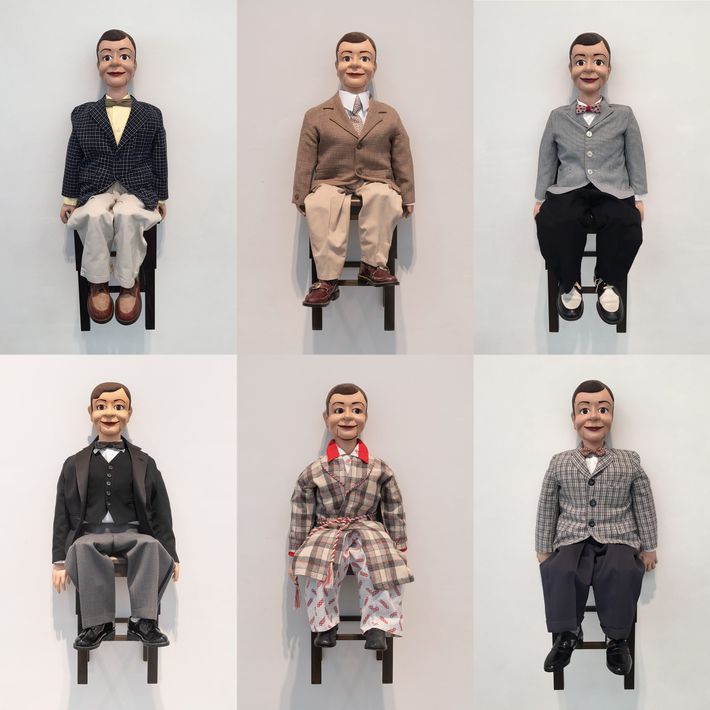
And tell me about the show at Salon 94. All of the subjects, with the exception of your dog, are wearing only body paint.
True, but it isn’t a body-paint project pre se. The last body of work I did was of fashion models. They closed their eyes and I had makeup artists paint real eyes over their closed eyes — real eyes, not anime eyes. I was inspired by cosplay and anime, but I had the makeup artists paint very realistic eyes. So that’s where it started — but then there was this viral video of a woman walking around in painted-on jeans, waiting to see how many people realized she was naked. I looked at it a lot of times, and then the whole project morphed form there. There’s nothing between us and nakedness except for a coat of paint, which is such a metaphor for being an artist. What really occurred to me was that I’d found a way to approach portraiture … I just never thought I would be here. I was always very proud of myself that I could wrest emotion from a doll or a puppet. It never occurred to me that I could find real emotion in a person. I think making a movie was a really big part of it. The Japanese love doll moved me into human scale, and once I was there I didn’t want to go back.
How did you choose your subjects?
They’re all people who are personal to me. But the show is also called “The Mess” because there’s an ever-growing arrangement of plastic objects in my studio. It’s about 30-feet long right now. My assistant and I go shopping to the local junk and dollar stores, and every time we got the stuff we would unload it onto the floor, working in a rainbow gradient. From the time I started taking photographs I started working with plastics. I’ve always treated plastic like it was marble or gemstone or fine glass. I’ve always gotten the most out of it. I love it! There was a time when plastic was the future and it was everything positive, and now you think about that thing in the ocean — that it’s killing animals and destroying the Earth — so this thing I made is now a 20-foot-long photo in the gallery. Everyone I know thinks that the last couple of years have been a mess. It’s not just the election, that’s too simple. For me it’s been experiencing so much death and a lot of tumultuous stuff with my kids. I don’t know anyone for whom the last couple of years have been easy.
Do you like having the shows up at the same time?
I haven’t questioned it!
Do you see them in conversation with each other?
I find a connection between the two bodies of work, but it’s really hard for me to articulate. They’re both portrait shows of a kind — but the most intriguing thing to me is that down the block from Mary Boone is my husband’s show, which is all about men. We both have shows up about men a few blocks from each other. The subject matter really connects. We’re sort of scratching our heads about it. We haven’t had the big conversation about it yet but we will.
